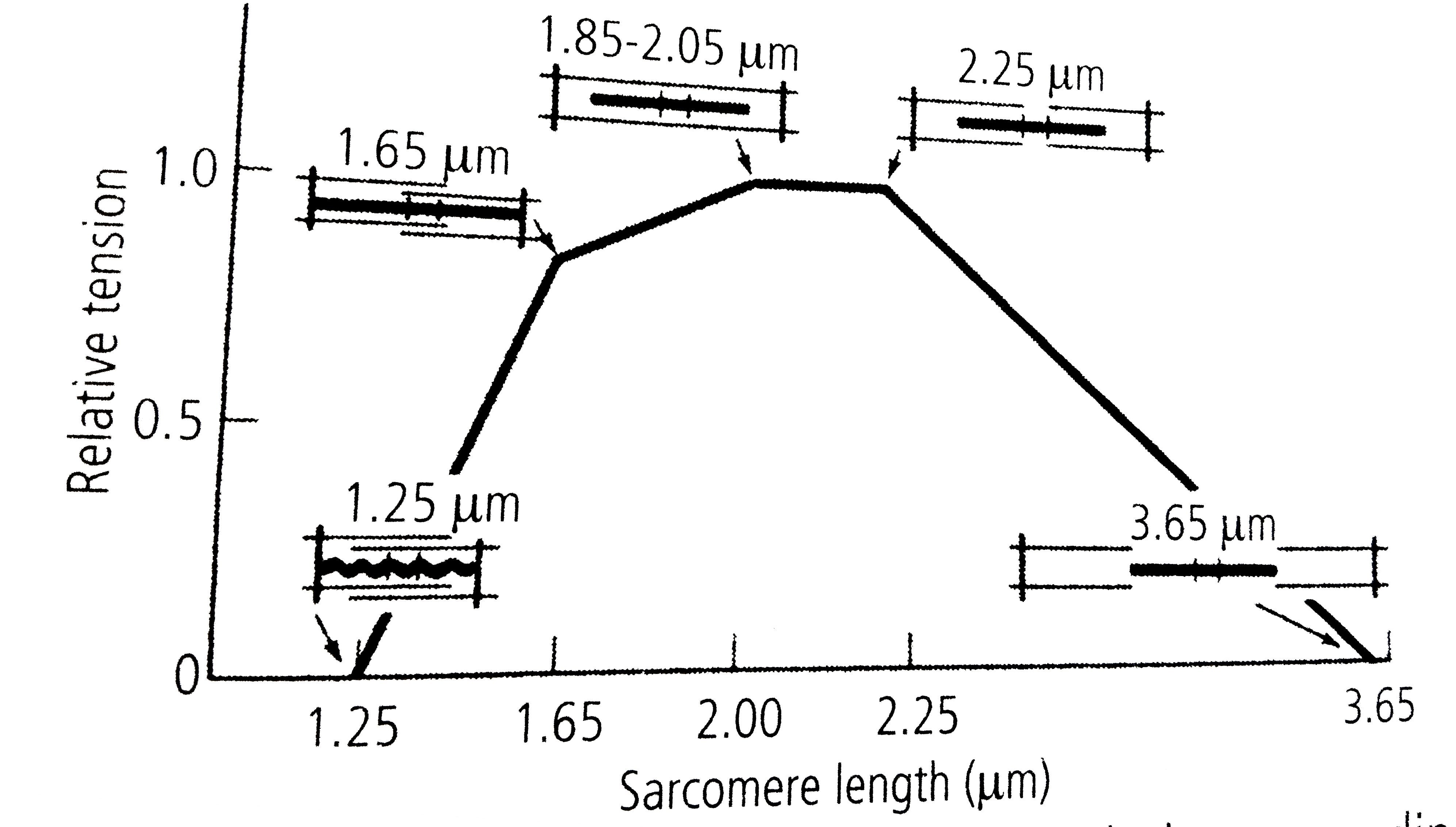Myosin myofilaments are
attached to the Z-disk
absent from the H-zone
found primarly in the I-band
none of the above
The correct Answer is:D
To answer the question about myosin myofilaments, let's analyze the options provided step by step.
1. Understanding Myosin Myofilaments:
- Myosin myofilaments are thick filaments found in skeletal muscle. They play a crucial role in muscle contraction by forming cross-bridges with actin filaments.
2. Analyzing Option A - Attached to the Z disc:
- The Z disc is the boundary of the sarcomere, and it is where actin filaments are anchored. Myosin filaments do not attach to the Z disc; instead, they are located in the A band of the sarcomere.
- Conclusion: This option is incorrect.
3. Analyzing Option B - Absent from the edge zone:
- The edge zone of the sarcomere refers to the area at the ends where actin filaments are present. Myosin filaments are not absent from this area; they are present in the A band, which overlaps with the edge zone.
- Conclusion: This option is also incorrect.
4. Analyzing Option C - Found primarily in the I band:
- The I band is the region of the sarcomere that contains only actin filaments. Myosin filaments are primarily found in the A band, not the I band.
- Conclusion: This option is incorrect.
5. Analyzing Option D - None of the above:
- Since all the previous options (A, B, and C) are incorrect, the only valid choice left is option D, which states that none of the above statements are true.
- Conclusion: This option is correct.
Final Answer:
The correct answer is Option D - None of the above.
- Myosin myofilaments are thick filaments found in skeletal muscle. They play a crucial role in muscle contraction by forming cross-bridges with actin filaments.
- The Z disc is the boundary of the sarcomere, and it is where actin filaments are anchored. Myosin filaments do not attach to the Z disc; instead, they are located in the A band of the sarcomere.
- Conclusion: This option is incorrect.
- The edge zone of the sarcomere refers to the area at the ends where actin filaments are present. Myosin filaments are not absent from this area; they are present in the A band, which overlaps with the edge zone.
- Conclusion: This option is also incorrect.
- The I band is the region of the sarcomere that contains only actin filaments. Myosin filaments are primarily found in the A band, not the I band.
- Conclusion: This option is incorrect.
- Since all the previous options (A, B, and C) are incorrect, the only valid choice left is option D, which states that none of the above statements are true.
- Conclusion: This option is correct.
The correct answer is Option D - None of the above.
Topper's Solved these Questions
- BOOK - TRUEMEN BIOLOGY ENGLISHCHAPTER - KINGDOM FUNGI (KINGDOM MYCOTA)EXERCISE - MULTIPLE CHOICE QUESTIONS147videos
KINGDOM FUNGI (KINGDOM MYCOTA)
- BOOK - TRUEMEN BIOLOGY ENGLISHCHAPTER - MORPHOLOGY OF FLOWERING PLANTS (ANGIOSPERMS)EXERCISE - Multiple Choice Questions329videos
MORPHOLOGY OF FLOWERING PLANTS (ANGIOSPERMS)
Similar Questions
Knowledge Check
- Question 1 - Select One
The given graph shows length-tension curve for a typical vertebrate sarcomere.

By analysing the graph, what can you deduce regarding the muscle contraction?
(i) Neither the myosin filaments nor the actin thin filaments change in length when a sarcomere shortens or is stretched. Instead, it is the extent of ocerlap between actin and myosin filaments that changes.
(ii) The total tension produced by a sarcomere is proportional to the total number of cross-bridges that can interact with actin filaments, and this number in turn is proportional to the amount of of overlap between thick and thin filaments.
(iii) The tension produced by the muscle is maximal when the overlap between thick and thin filamentss allows the largest number of myosin cross-bridges to bind to actin.
(iv) Tension drops off with increased lenght, because the thick and thin filaments overlap less and fewer cross-bridges can bind.
Tension drops off with decreased length, because thin filaments at the two ends of the secromere begin to collide with each other, preventing further shortening.A(i) OnlyB(i),(iii) and (iv)C(i),(iii),(iv) and (v)D(i),(ii),(iii),(iv) and (v)
The myosin myofilament can be cleaved into a head and a tail piece. All of the following are accurate in describing the position of myosin in a sacromere except
(i) A-band is the length of a myosin myoilaments
(ii) A-band contains thin and thick myofilaments
(iii) A-band does not include actin-binding sitesView SolutionThin myofilaments are made up of
View SolutionSarcomere, actin filaments, myosin fillaments, sarcoplasmic reticulum.
View SolutionIn resting stage, binding sites for myosin on actin filaments are masked by
View SolutionDifferentiate between:
Actin and Myosin filamentsView SolutionDifferentiate between Actin and Myosin filaments
View SolutionThe number of thick myofilaments (myosin ) surrounding single thin myofilament ( actin) are
View Solution
